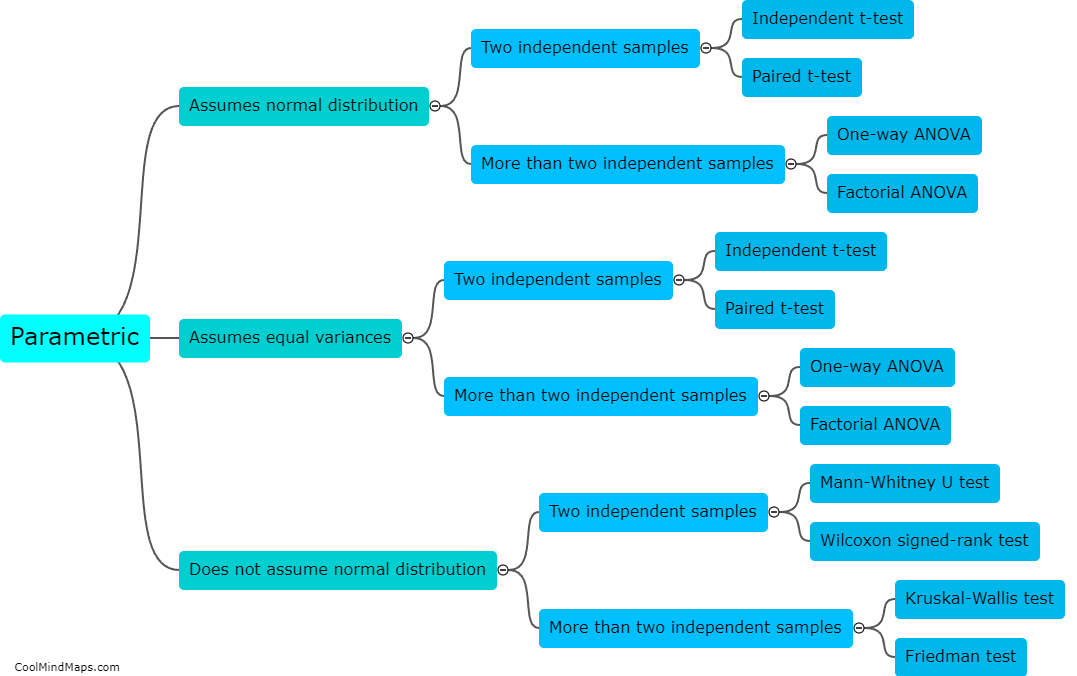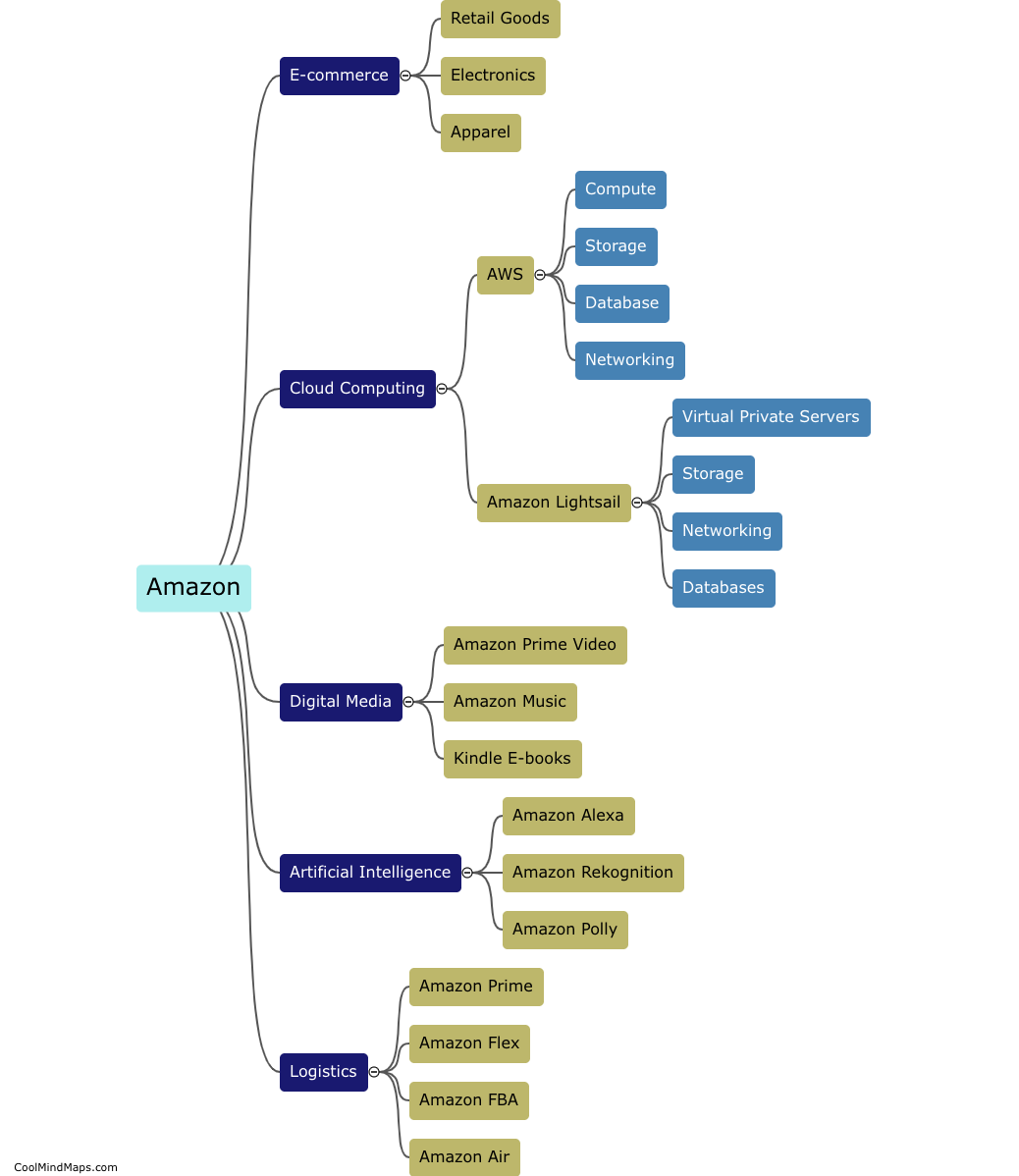What are the differences between parametric and non-parametric tests?
Parametric and non-parametric tests are statistical methods used to analyze data and make inferences. The main difference between them lies in the assumptions they make about the data. Parametric tests assume that the data is normally distributed and that the parameters of the distribution are known or can be estimated. These tests involve making inferences about population parameters such as means and variances. On the other hand, non-parametric tests are distribution-free and do not make any assumptions about the underlying distribution of the data. They are used when the data does not meet the assumptions of parametric tests, such as when the data is skewed, has outliers, or is measured on an ordinal scale. Non-parametric tests focus on making inferences about the relative order or ranks of the data rather than estimating population parameters.

This mind map was published on 13 October 2023 and has been viewed 113 times.











